My absolute favorite thing we did on this cruise (on or off the boat) was the ship’s tour. It’s funny because initially I almost gave it a pass, thinking it was more Lee’s speed, but I am so glad I went. As you may know I am a process analyst for a living and seeing the behind scenes of how things work was fascinating. Not only were we able to go into some very special places in the ship, but the tour guides were very honest about living and working on a cruise ship.

Let me start by giving you some information about the Navigator of the Seas that we got on a FAQ sheet after the tour. The ship is 161 feet wide and 1,020 long. It weighs 139,999 GT and can make 22 knots of cruising speed although they rarely go that fast. The guest occupancy is 3,388 (double occupancy) and it has 1,232 crew members. Our particular cruise was full and every room was occupied. Most of the areas people see though are on the top levels of the ship, but we got to see the levels that people rarely go in.
We started the tour in the main dining room and although we were clearly told you had to wear close toed shoes and long pants, three people were sent back to their rooms to change. While we were waiting on them we got information from one of the main chefs about the dining facility.

He shared that the main dining room only seats 1400 people which helped explain why you had to schedule your meal time. There are 132 cooks on board and 8 nationalities. Most of the chefs were from India and Asia although there were two Italian chefs on board. For one week at sea the ship buys $380K worth of food and the standards for that food is based on where the ship embarks from. In our case all the food is USDA stamped and most that I saw came through California. He mentioned that the standards are very different for European cruises and in his opinion the base food items were actually better because there was no genetic modification.



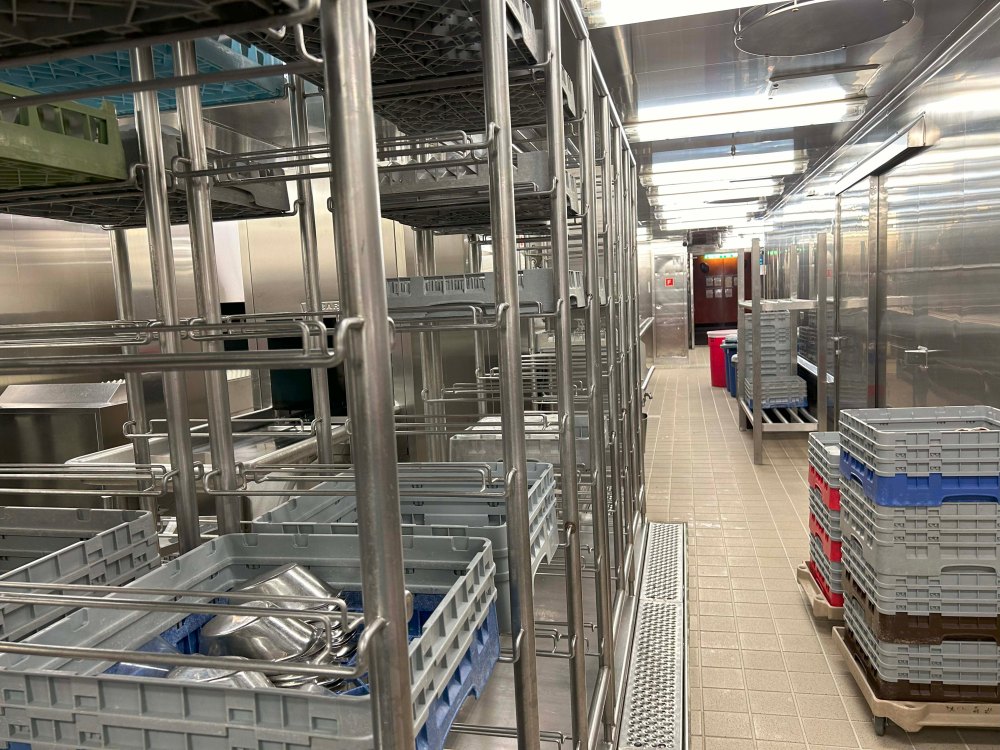

The kitchen was immaculate and I didn’t get the feeling it was only because we were touring. The head chef stated they follow CDC cleanliness guideline and have 88 galley cleaners working round the clock. They had a “clean as they go” standard for all kitchen workers which I appreciated.






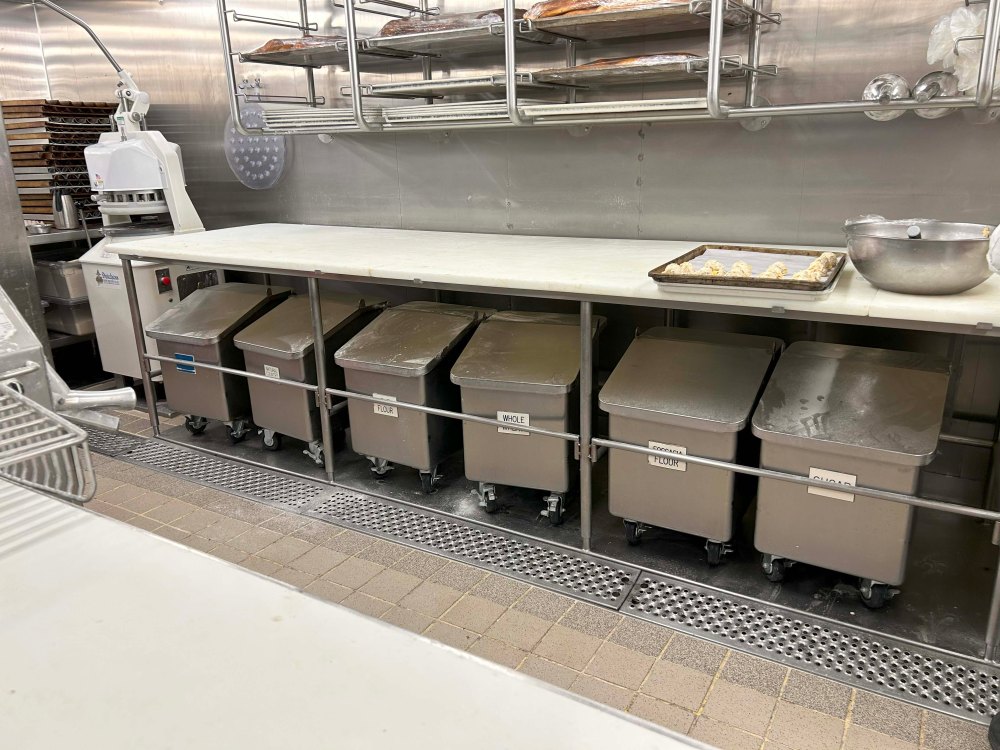


After we left the kitchen we walked down narrow flights of stairs to the “I-95 corridor”. This is the main “superhighway” that goes from the very front all the way to the rear, uninterrupted. This is the walkway to get to the various crew areas and everyone was moving along at a fast clip. Next we went down to the supply areas and saw the refrigerators and freezers. Keep in mind we only had two days left in the cruise and this was as empty as these areas got.












I didn’t stay in the freezer long and had a minute for a quiet moment with our tour guide. I shared I was a logistics analyst and he shared with me that the food was ordered three weeks in advance and the mix of items was determined by a usage database based on the ethnicity of the passengers. Apparently people from different places eat different kinds of food which makes perfect sense but I never really thought about it before. Fascinating.

Next we went to visit the trash area. The ship has a strict “Save the Waves” policy so nothing goes overboard. They compress and recycle everything that they can and the money that comes from recycling goes towards crew motivational events. Whatever cannot be recycled is incinerated by the engines and the ashes are taken ashore. We also learned that all water, 100% of it, is seawater that is desalinated by engine powered steam evaporators and then used by the ship, Next we went to visit the trash area. The ship has a strict “Save the Waves” policy so nothing goes overboard. They compress and recycle everything that they can and the money that comes from recycling goes towards crew motivational events. Whatever cannot be recycled is incinerated by the engines and the ashes are taken ashore. We also learned that all water, 100% of it, is seawater that is desalinated by engine powered steam evaporators and then used by the ship. They have zero fresh water storage tanks. And all the used liquid is recycled for nonpotable use. Sewage water is completely cleaned and returned to the sea as plain water. and I will say that the water tastes excellent. They have zero fresh water storage tanks. And all the used liquid is recycled for nonpotable use. Sewage water is completely cleaned and returned to the sea as plain water.





Next we went to the engine control room, and we had to go through a personal security wanding before we were allowed in the area, plus there were two armed security officers with us while we were in the control room. The room was full of monitors for all parts of the ship and they are monitored 24/7 by engineers who work in four hour shifts.











A couple of things I found particularly interesting. First we were shown a picture of the propellers on the ship and learned the two on the outside could turn at a 90 degree angle and there was no rudder on the ship.
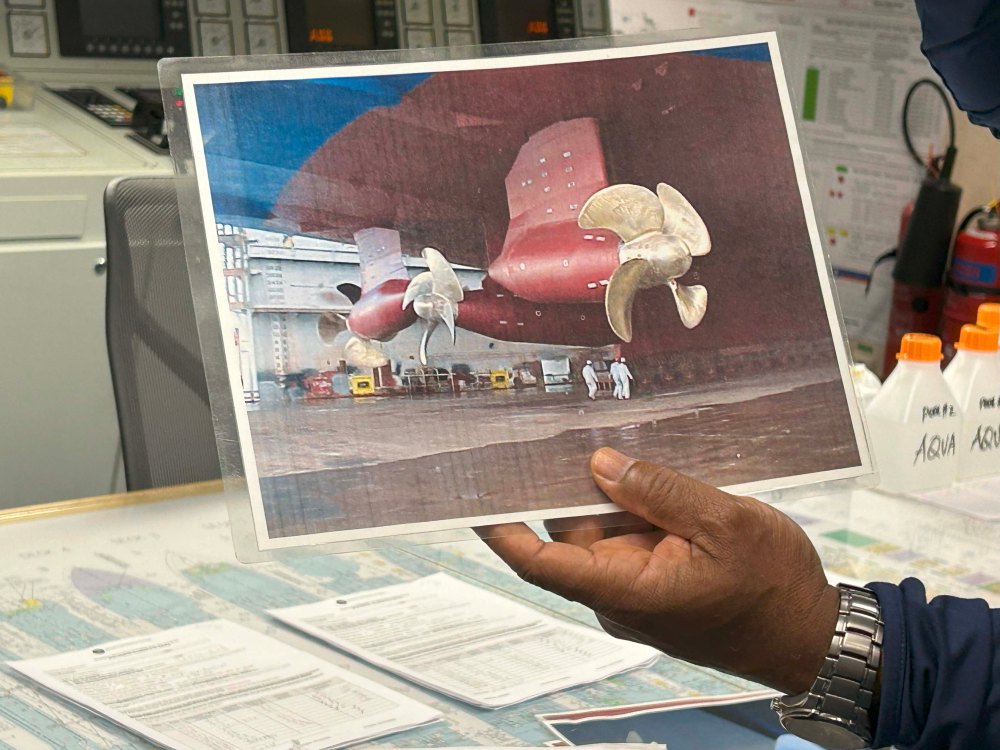
Secondly we saw a dedicated monitor for the helipad and saw that area was monitored 24/7. Lee was pretty annoyed that the helipad was closed after sunset, but when we learned the light interfered with the ship lookouts at night it made more sense. The sign they put up though says closed for high winds or something it would be good if they were just honest about why they were closing it. Maybe its a security thing.
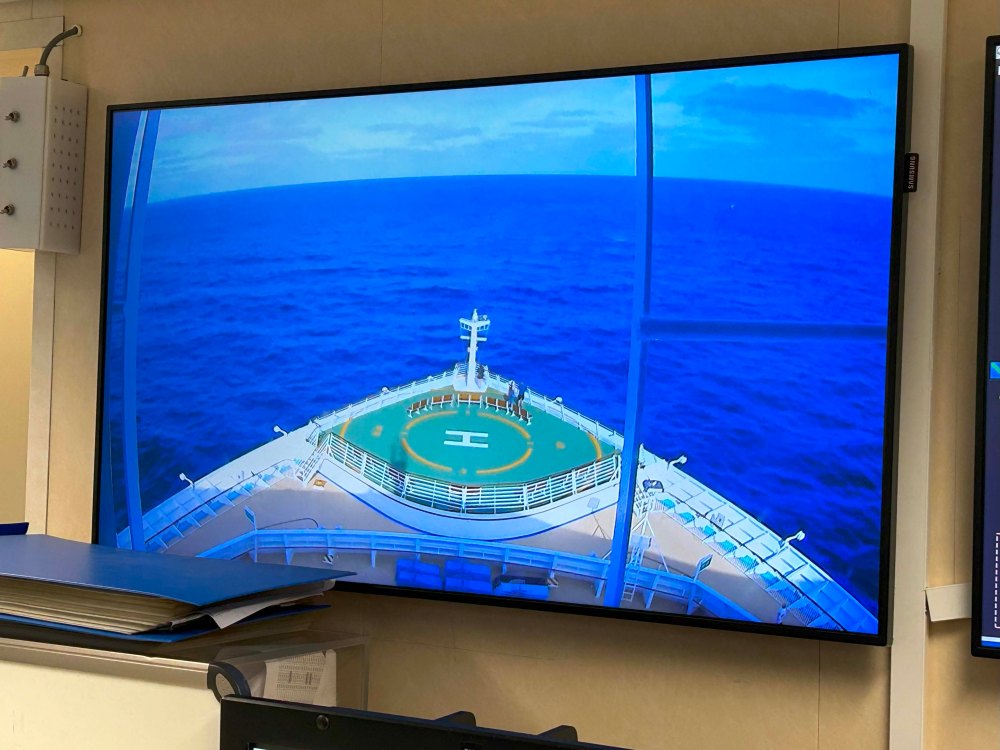
Next we went to the laundry area and I think this was my favorite part of the tour. The kids were all really nice and they have invested in multiple machines to lessen the workload. We learned that 20,000 napkins have to be folded a day and there is a machine that does that. They also had a machine to press sheets and best of all a cool steamer that does clothes. I want one of those!! We took advantage of a laundry deal the first day we were on the ship and for $18 we were able to press ten pieces of clothing. We got to see how they did it.
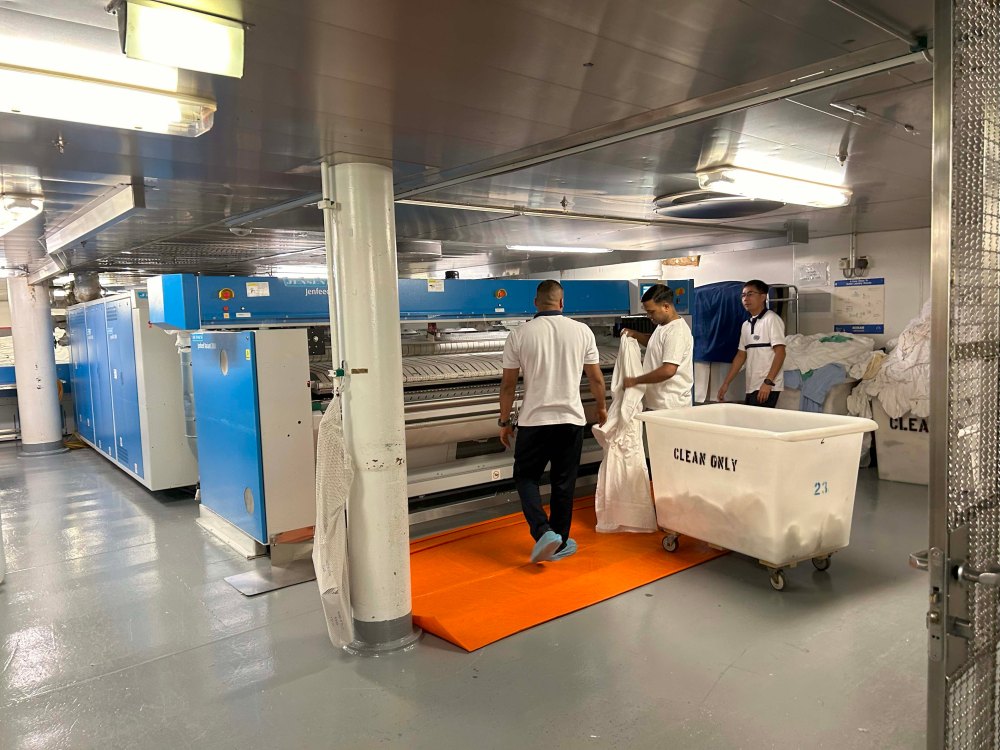















As cool as the tour was we weren’t able to see all of the areas of the ship. Unfortunately there were no empty crew quarters but we had heard most were very small with two bunks each with its own small TV. Married couples (and we met several) are allowed to share quarters but everyone we talked to said the best thing about promotion wasn’t the money but a better room. 90% of the rooms are windowless, but the officer rooms are on Deck 10 and quite spacious.
The most interesting story we heard was about COVID when the crew members were on lockdown in their very small rooms. Again it wasn’t something I thought about but there was no way to get all these international crew members home so they were held in place. Finally after near “mutinies” (the tour guides words not mine, the crew was allowed to move into the passenger quarters during lockdown. Things were much improved once they had access to fresh air and many had balconies.
Other areas we heard about but did not see are a jail (with two cells), a morgue (no it isn’t used for flowers, being a morgue is its sole purpose), and the clinic. The clinic cannot do any operations but can handle a broken bone. Lee actually lost his big toenail and went to the clinic, but was given a brusque reception and told it would cost us $500 if the doctor had to be woken up and no insurance was accepted. He settled for bandages and Neosporin which I applied in the room, but the message was sent that for anything serious a helicopter would be called, and if you “didn’t need the helicopter”, then you were “probably fine”. If you have health concerns, travel health insurance is probably a good idea.
Speaking of health concerns after COVID the ships crew now has to pass more strenuous medical exam every two years. They have weigh requirements in some cases and people have to either lose weight, get healthier, or lose their spot.
Finally we went up to Deck 10 and onto the bridge. I was surprised by how young the officers were and learned the ship is usually on auto pilot. That being said the crew was very alert and there is a full time lookout for objects too small for the ships radar to pickup. Mainly this could be refugees on rafts and they took this responsibility very seriously. The group asked a lot of questions during this portion of the tour in particular about whales. We were running on a major whale route and the officers stated that they would need to manually divert if the whales were in their path. Sometimes this involves a hard turn to avoid the pods but the crew is committed to do no harm.

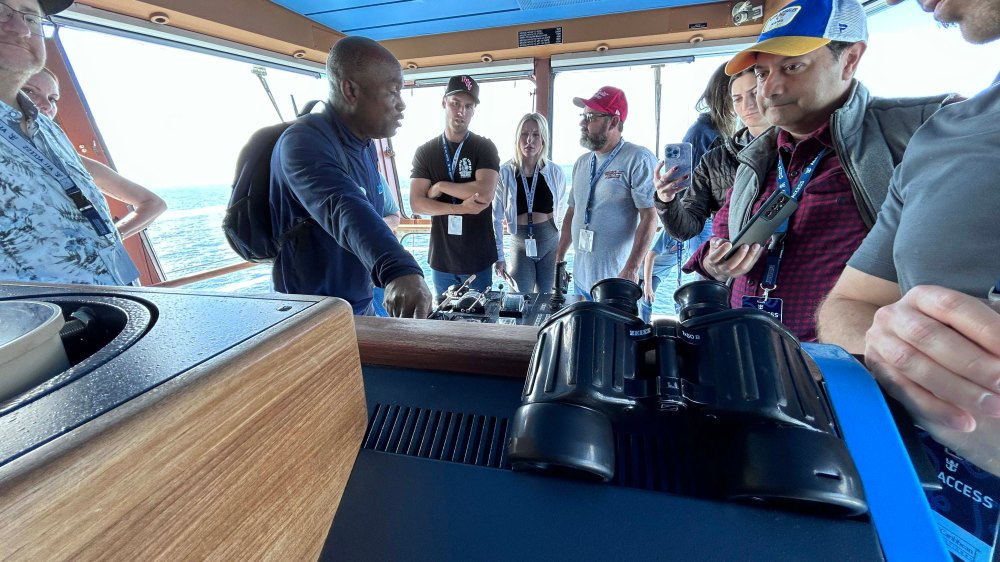
We also learned the first officer is mostly running the ship and the captain’s role is largely management and administrative. Someone asked if we had left a passenger in Puerto Vallerta and we were told yes the captain had made that decision. After multiple hails the passenger wasn’t on the dock and there are penalties for staying in port too long. The entire tour was really great and if you have never done one I highly recommend it. As I said it really was my favorite thing we did on the entire cruise.

We very much appreciate your support of our blog.
